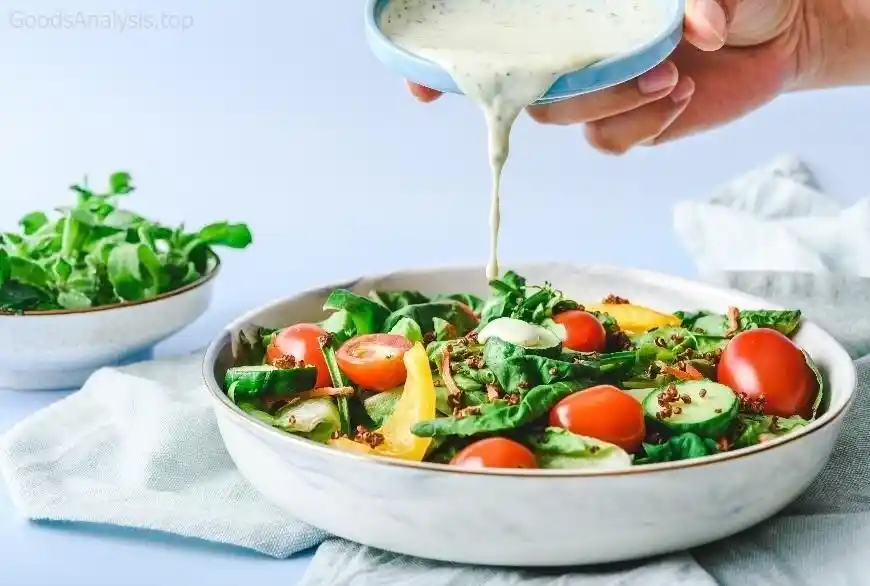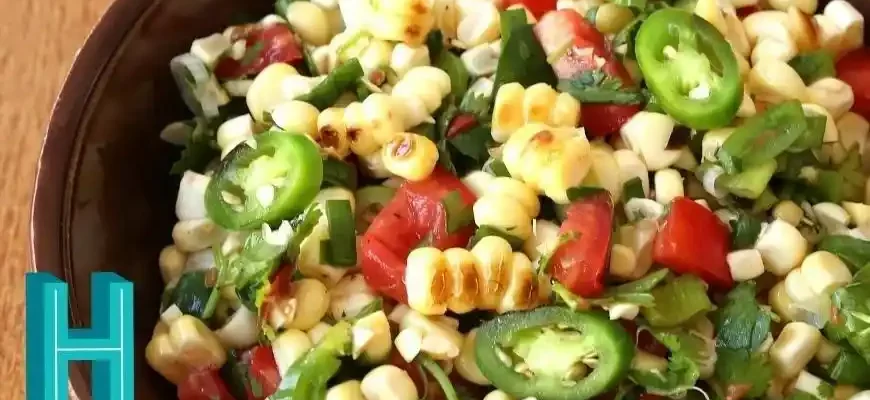When you hear the word “salad,” what comes to mind? A simple bowl of greens? A colorful mix of vegetables? Or maybe even a gourmet dish that’s more like an art piece than something to eat? Well, the truth is, salads can be all of that and more. They can be as basic or as extravagant as you want, and the beauty of salads lies in their incredible versatility.
Let’s dive into the world of salads, starting with the basics and then working our way through various styles, tips, and even some of the most common mistakes people make. Whether you’re an experienced home cook or a beginner just looking to add a bit of greenery to your plate, there’s something here for you.
The Basics of Salad Making
At its core, a salad is simply a mixture of vegetables or fruits, sometimes with the addition of protein (like chicken, tuna, or beans), grains (such as quinoa or couscous), and often topped with a dressing. But the possibilities don’t end there.
Ingredients:
- Base greens: Lettuce, spinach, kale, arugula, romaine—these are the foundation of most salads. Try to use fresh, vibrant leaves. For a crunchier texture, mix different kinds of lettuce.
- Vegetables: Cucumber, tomatoes, radishes, carrots, peppers, onions. These not only provide flavor but also texture. Think about color and balance—green, orange, red—aim for variety.
- Fruits: Adding fruits like apples, oranges, strawberries, or even mango can bring a sweet contrast to the savory notes of your salad.
- Proteins: A salad is more than a side dish when you add protein. Chicken, turkey, beans, or tofu work wonderfully. For a heartier meal, try grilled salmon, tuna, or even a boiled egg.
- Grains: Quinoa, bulgur, and couscous can turn your salad into a filling dish. These grains bring in fiber and nutrients that make a salad more satisfying.
- Extras: Think of nuts (almonds, walnuts), seeds (sunflower, chia), cheeses (feta, goat cheese, parmesan), and herbs (parsley, basil, dill). These add flavor and crunch.
Dressings:
This is where the magic happens, folks. A good dressing can elevate a salad from basic to amazing. While store-bought dressings are quick and convenient, homemade dressings are easy to whip up and offer a much fresher taste.
Here’s a simple formula for a vinaigrette dressing:
- 3 parts oil (olive oil is a popular choice)
- 1 part acid (vinegar, lemon juice)
- Salt, pepper, and a touch of mustard or honey to bind it all together
For creamy dressings, add yogurt, sour cream, or mayonnaise to thicken it up. Just be mindful of the calories if you’re trying to keep things light.
Types of Salads
1. Green Salads
These are the classic salads made with leafy greens and veggies. They’re light, fresh, and highly customizable. Add protein or grains to make them more filling. A Caesar salad or a classic garden salad with a tangy vinaigrette is always a winner.
2. Grain-Based Salads
These salads often use cooked grains like quinoa, farro, or rice as the base, and then you add vegetables, beans, and protein. They’re great for meal prep because they keep well in the fridge. A popular example is tabbouleh, which uses bulgur wheat, parsley, tomatoes, and mint.
3. Pasta Salads
Pasta salads are a favorite for picnics and barbecues. The pasta serves as a hearty base, and you can mix in vegetables, cheese, and a dressing. Classic pasta salad typically features cooked pasta, cucumber, bell peppers, olives, and some sort of creamy dressing or Italian dressing.
4. Fruit Salads
These are light and refreshing, often enjoyed as a dessert or side dish. They’re perfect in the summer months, especially when fresh fruits are abundant. You can combine fruits like melon, berries, pineapple, and grapes, and add a drizzle of honey or lime juice for extra flavor.

5. Protein-Rich Salads
For a salad that’s a meal, add protein-rich ingredients like chicken, beef, tuna, or chickpeas. A Cobb salad, which includes chicken, bacon, hard-boiled eggs, and avocado, is a well-known protein-packed option.
Common Mistakes and How to Avoid Them
Making a salad might seem like an easy task, but there are a few common pitfalls. Let’s take a look at some of the most frequent mistakes people make when preparing salads and how to avoid them.
1. Using Wilted or Old Greens
No one wants to eat limp, yellowed lettuce. Always use fresh greens for the best texture and flavor. If you’re unsure about freshness, check the edges of the leaves—they should be crisp, not soft.
2. Dressing Too Early
Dressings should be added just before serving. If you toss your salad too early, the greens will wilt and become soggy. For the perfect salad, dress it just before eating, or even better, serve the dressing on the side.
3. Overloading with Dressing
It’s easy to drown your salad in dressing, but too much can overwhelm the ingredients and add unnecessary calories. Use a light hand with dressings or opt for a vinaigrette with fewer calories than creamy options.
4. Not Enough Protein
If you’re making a salad as a main meal, don’t skimp on protein. A salad without enough protein might leave you hungry soon after eating. Add a solid protein source like chicken, tuna, beans, or a hard-boiled egg to make your salad more filling.
5. Not Balancing Textures
A good salad has a variety of textures. Mix crunchy (nuts, seeds, raw vegetables) with creamy (avocado, cheese), chewy (grains, pasta), and tender (greens, cooked proteins) to keep things interesting. A salad should never be one-note.
Nutritional Benefits of Eating Salad
Incorporating salads into your daily meals offers several health benefits:
- Rich in Fiber: Vegetables and grains are excellent sources of fiber, which is essential for digestion and helps keep you full longer.
- Low in Calories: Depending on the ingredients, salads can be a low-calorie option, making them ideal for weight management.
- Packed with Vitamins and Antioxidants: Fresh vegetables and fruits are loaded with vitamins A, C, and K, as well as antioxidants that support immune function and skin health.
- Heart-Healthy Fats: If you include nuts, seeds, or olive oil in your salad, you’re adding heart-healthy monounsaturated fats that can improve cholesterol levels.
Salad Opinions from Around the World
- Maria, 55, Spain: “In Spain, we have a very simple salad called ‘ensalada mixta,’ which is just lettuce, tomatoes, onions, olives, and some tuna. I love how fresh and light it is, perfect for a summer evening.”
- John, 42, USA: “I’m a fan of grain-based salads. I like to cook a batch of quinoa or couscous, throw in some veggies, chickpeas, and a nice lemon vinaigrette. It’s a great option when you need something quick but filling.”
- Priya, 30, India: “In India, we often make a spiced-up vegetable salad called ‘kachumber,’ which is a mix of cucumbers, tomatoes, onions, and a sprinkle of cumin and coriander. It’s refreshing, especially with spicy food.”
- Ahmed, 65, Egypt: “My go-to salad is usually a bowl of fresh greens, herbs, and olives, topped with some grilled chicken or lamb. It’s simple, yet full of flavor.”
- Kara, 29, Australia: “I’ve been experimenting with fruit salads lately. I love combining tropical fruits like pineapple and mango with a squeeze of lime and a sprinkle of mint. It’s like a mini-vacation in a bowl.”
Final Thoughts
Salads are one of those rare dishes that can be whatever you want them to be. They can be light, healthy snacks or hearty, filling meals. By choosing fresh ingredients, balancing textures and flavors, and adding in the right amount of protein and dressing, you can make a salad that satisfies both your taste buds and your nutritional needs.
The key to great salads? Keep it fresh, don’t be afraid to experiment, and most importantly, enjoy the process!









